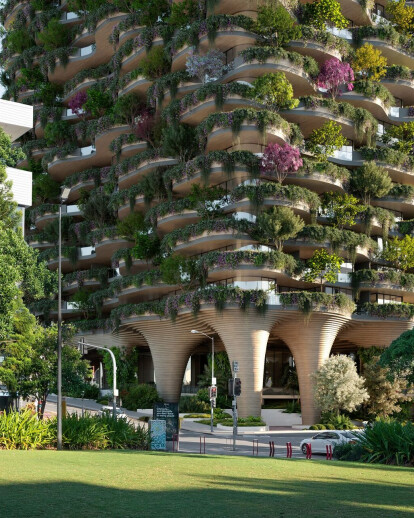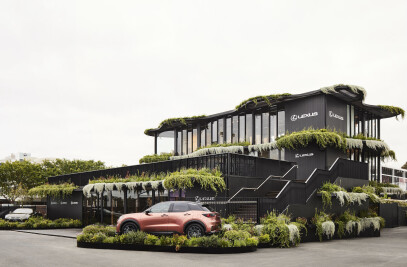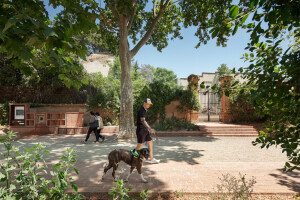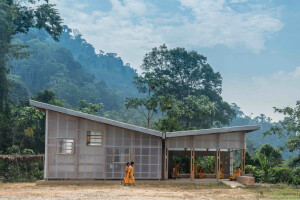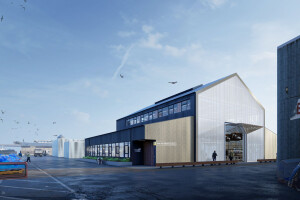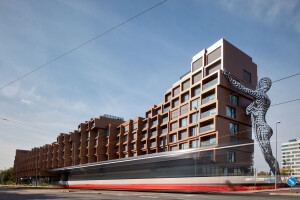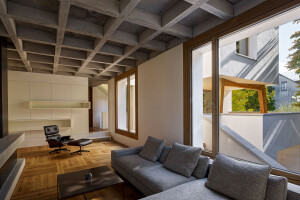Going beyond the headline of a ‘green building’
Featuring one of the world’s most densely-forested vertical gardens, Urban Forest by Aria Property Group and designed by Koichi Takada Architects, is a 30-storey mixed-use residential high-rise located in the cultural precinct of South Brisbane, Australia. The building includes 382 apartments, a two-storey rooftop with garden and residential amenities, and an open public park on the ground level. The site of the building totals 2,782 square meters and it will have an overall floor area of 55,000 square meters.
Vertical planting in high-rise buildings is part of a new movement that sees architects bringing greenery, biodiversity, oxygen and mental health benefits back to high-density city living. Urban Forest achieves 300% site cover with living greenery, featuring 1000 plus trees and more than 20,000 plants selected from 259 native species. This is more than five times the number of trees found in nearby Musgrave Park. The landscape is not just an attractive feature, but is a dynamic, active component of a sustainable building, increasing biodiversity and reducing the ecological footprint of the city. It will also create a green spine connecting the Southbank Parklands with Musgrave Park.
Urban Forests ambition is to be the world’s greenest residential building. By targeting 6-star Green Star rating, equivalent to LEED Platinum, Urban Forest represents another stage in the evolution of the architectural vertical garden. It will set the benchmark for sustainable and subtropical high-rise apartment buildings, creating an exemplar in design-led development and innovative ESD standards in Brisbane. Passive design principles make the most of the subtropical climate, maximising natural light and allowing cross-ventilation.
Organic, sculptural, stepping facades covered in greenery provide physical and visual insulation from the sun, wind and rain, while sky gardens and facade vegetations also provide natural thermal and solar insulation. Other sustainable features include solar panels to generate renewable energy, gardens irrigated by harvested rainwater and grey water collection, carbon offset, and the use of sustainably-sourced and high quality, low maintenance materials. Because this is a low-energy building with high water efficiency, operating costs are reduced also.
On the ground level, the building is designed as a useable, comfortable and friendly public park for the community. The building is lifted up, just as the traditional Queenslander is lifted on stumps, with tall sculptural columns envisaged as ‘tree trunks’ supporting the tower above. This space, filled with dappled light, brings the experience of the building to the ground level creating connection to the public domain over 1,642 square meters.
As an example of world-class sustainable design, Urban Forest gives back to the community, creating a home with a strong sense of place and identity. A world class visitor experience and tourist centre will be created on site to educate patrons on building design, plant types and biodiversity. The centre will provide the opportunity to engage with and educate local schools, universities and visitors on the sustainable performance of the building. By investing in the community, Urban Forest invests in the future of the planet and people.
Urban Forest offers a holistic approach to sustainability, creating not just a ‘green’ building with heavy vertical vegetation, but also setting a benchmark in environmentally-sustainable design and offering a social sustainability approach through the creation of a large public park on the ground level. And a best-practice approach to energy and water management. In this way, Urban Forest strikes the balance between environmental, social and economic sustainability, prioritising people, planet and profit.
Koichi Takada says:
“Urban Forest is probably the greenest we can design with the current “greening” tools and regulations available to us.”
“Since the industrial revolution, our society has focused on mass production. Now is the time to shift towards mass greening. 2020 has represented a number of different crises to our society and environment from the devastating bushfires in Australia to COVID-19 pandemic crisis worldwide. With the post COVID-19, I think it’s a great opportunity to pause and rethink and not just adapt, but shift the paradigm from industrial to natural. Concrete, steel and glass are very hard and solid industrial materials. Let’s call them dead materiality. We need to be embracing more living materiality, living architecture. One take away from the COVID-19 pandemic crisis is the realisation that we are all living things. We are here to live, not defy death in some way. Our architecture should do the same.”
